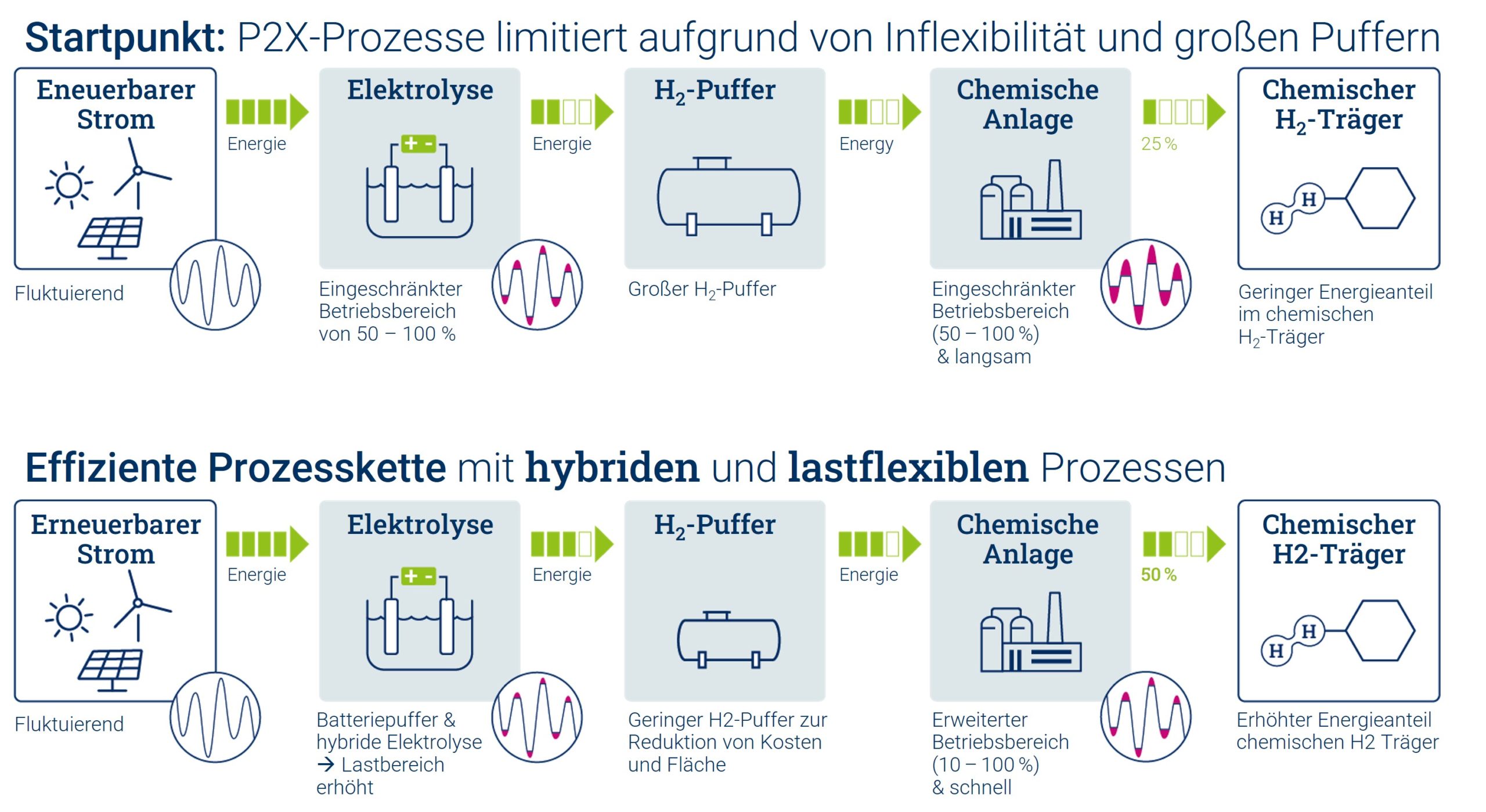New ammonia reactor
An ammonia synthesis plant is a large-scale industrial facility. Photo: Adobe Stock
New reactor for the hydrogen economy of the future
An advanced reactor for the production of green ammonia is set to help solve one of the major challenges of energy transition. Scientists from Forschungszentrum Jülich, the Technical University of Munich and Linde Engineering have now described a new approach in the Chemical Engineering Journal. It can be used to reduce the costs of storing green energy in hydrogen derivatives. The research group is initially focussing on ammonia synthesis.
Ammonia, which is a compound of hydrogen and nitrogen, has a major advantage as an energy storage medium compared to pure hydrogen: it has a significantly higher energy density, which makes storage and transport much easier due to its smaller volume. Hydrogen in its pure form, which is compressed at a pressure of 300 bar, contains around 700 kilowatt hours of energy in a volume of one cubic metre. In the case of ammonia, one cubic metre at a compression of 20 bar contains 3000 kilowatt hours.
Graphic left: NH3 – this is the chemical formula for ammonia. The molecule consists of one nitrogen atom and three hydrogen atoms. Graphic: pixabay
In order to utilise the benefits of ammonia in a climate-friendly energy system of the future, a bottleneck must be overcome. Ammonia synthesis is dependent on a constant supply of nitrogen and hydrogen. Nitrogen can be obtained from the air at any time. Hydrogen must be supplied to the process. This will be a challenge if ammonia is to be produced using green hydrogen in the future. This comes from electrolysis and is only available if it is produced using green electricity, for example from wind or solar energy. Green electricity is not constantly available – in contrast to natural gas, which is used to produce grey hydrogen, which has been used in ammonia synthesis up to now.
The research group from Jülich and Munich is working on using a new reactor concept to better adapt ammonia synthesis to the fluctuating availability of green hydrogen. Looking at green energy systems of the future, the aim is to prevent the need to integrate additional large storage facilities into the process.
Buffer storage solutions that can compensate for the low load flexibility of the synthesis plants are sometimes problematic for the economic viability of ammonia synthesis. We want to ensure that storage systems become smaller and cheaper.
Prof. Andreas Peschel from the Institute for a Sustainable Hydrogen Economy (INW) at Forschungszentrum Jülich
Adapting better to green energy
Today’s plants are designed for constantly high capacity utilisation due to the supply of grey hydrogen. At a lower utilisation rate of less than 50 percent, they would have to be shut down. The subsequent ramp-up of ammonia synthesis takes several days. With the current design, the plants are therefore only compatible with green energy to a limited extent.
The research group wants to achieve ammonia synthesis functionality from a minimum capacity utilisation of 10 per cent. “If we succeed, then in relation to a minimum capacity utilisation of 50 per cent this means that the hydrogen buffer storage only needs to be a fifth of the size. That is a major economic and logistical advantage for the future,” says Andreas Peschel.
To get there, the research group wants to use a reactor with a larger heat exchange surface. In this way, the heat of around 350 degrees required for ammonia synthesis can be obtained more efficiently and, in contrast to plants in operation today, is also available when the system is running at lower capacity.
“Quickly into the application”
At the Institute for a Sustainable Hydrogen Economy in Jülich, Peschel and his team will be building and operating a test facility for the reactor, which increases load flexibility, over the next two years. “The technology for this has already been researched quite extensively, so we hope to gain further insights from the operation in order to quickly put the technology into application.” There are already approaches for a further development of the currently planned reactor. The Jülich hydrogen researchers are also aiming to design new reactors and process concepts for hydrogen derivatives such as methanol and methane in order to make the energy storage process more favourable.
The researchers are convinced of the great benefits of green ammonia synthesis for the future. “Ammonia is not only highly interesting as a storage solution for hydrogen,” says Andreas Peschel. “It has long been used in large quantities as a raw material for the production of fertilisers, making it one of the most widely used chemicals in the world. If we succeed in converting ammonia production to green hydrogen, this could have a global leverage effect in the fight against global warming.”





